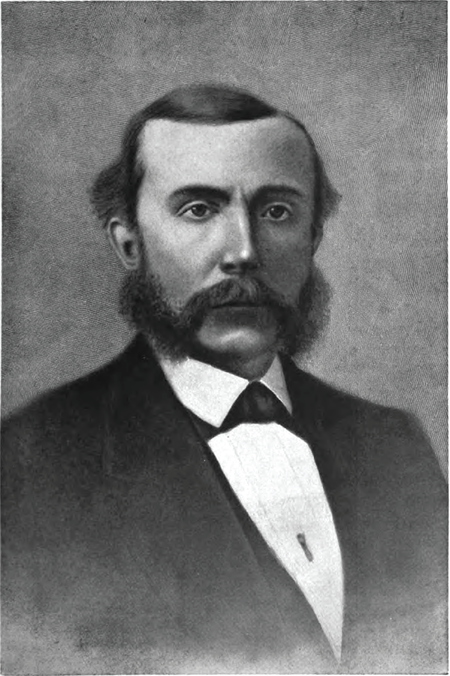Food additive
|
Read other articles:

Lucas Cranach TuaLucas Cranach Tua, potret pada usia 77 tahun, skt. 1550. Minyak di atas panel, 67 × 49 cm. Uffizi, FirenzeLahirLucas Malerskt. 1472KronachMeninggal16 Oktober 1553 (usia 81)WeimarDikenal atasLukisanGerakan politikRenaisans JermanPatron(s)Elektor Sachsen Lucas Maler dikenal sebagai Lucas Cranach Tua (Jerman: Lucas Cranach der Älterecode: de is deprecated pelafalan dalam bahasa Jerman: [ˈluːkas ˈkʁaːnax dɛɐ̯ ˈʔɛltəʁə], lahir 4 Oktober 1472 di Kronach, F…

This article has multiple issues. Please help improve it or discuss these issues on the talk page. (Learn how and when to remove these template messages) This article needs to be updated. Please help update this article to reflect recent events or newly available information. (June 2022) This article needs additional citations for verification. Please help improve this article by adding citations to reliable sources. Unsourced material may be challenged and removed.Find sources: National Ne…

此條目可参照英語維基百科相應條目来扩充。 (2021年5月6日)若您熟悉来源语言和主题,请协助参考外语维基百科扩充条目。请勿直接提交机械翻译,也不要翻译不可靠、低品质内容。依版权协议,译文需在编辑摘要注明来源,或于讨论页顶部标记{{Translated page}}标签。 约翰斯顿环礁Kalama Atoll 美國本土外小島嶼 Johnston Atoll 旗幟颂歌:《星條旗》The Star-Spangled Banner約翰斯頓環礁地�…

American baseball player (born 1981) Baseball player Anthony ReyesReyes with the St. Louis CardinalsPitcherBorn: (1981-10-16) October 16, 1981 (age 42)Whittier, California, U.S.Batted: RightThrew: RightMLB debutAugust 9, 2005, for the St. Louis CardinalsLast MLB appearanceMay 22, 2009, for the Cleveland IndiansMLB statisticsWin–loss record13–26Earned run average5.12Strikeouts205 Teams St. Louis Cardinals (2005–2008) Cleveland Indians (2008–2009) Career …

Si ce bandeau n'est plus pertinent, retirez-le. Cliquez ici pour en savoir plus. Cet article ne s'appuie pas, ou pas assez, sur des sources secondaires ou tertiaires (septembre 2022). Pour améliorer la vérifiabilité de l'article ainsi que son intérêt encyclopédique, il est nécessaire, quand des sources primaires sont citées, de les associer à des analyses faites par des sources secondaires. Frères des Écoles chrétiennes(Lasalliens) Signum fidei Ordre de droit pontifical Approbation p…

2016年美國總統選舉 ← 2012 2016年11月8日 2020 → 538個選舉人團席位獲勝需270票民意調查投票率55.7%[1][2] ▲ 0.8 % 获提名人 唐納·川普 希拉莉·克林頓 政党 共和黨 民主党 家鄉州 紐約州 紐約州 竞选搭档 迈克·彭斯 蒂姆·凱恩 选举人票 304[3][4][註 1] 227[5] 胜出州/省 30 + 緬-2 20 + DC 民選得票 62,984,828[6] 65,853,514[6] 得…

1919 violent confrontation in Glasgow, Scotland Battle of George SquarePart of Red Clydeside and theRevolutions of 1917–1923David Kirkwood and Willie Gallacher being detained by City of Glasgow Police at the City ChambersDate31 January 1919LocationGlasgow, ScotlandCaused by attempt to stop tram traffic in the Square and subsequent action by the police to clear the way Resulted in Rioting in parts of Glasgow Army units deployed to Glasgow Parties Glasgow Corporation Glasgow City Police Proteste…

Voce principale: Unione Sportiva Grosseto Football Club. Unione Sportiva GrossetoStagione 1974-1975Sport calcio Squadra Grosseto Allenatore Andrea Bassi Presidente Mario Ferri Serie C7º posto nel girone B. Maggiori presenzeCampionato: Marini (37) Miglior marcatoreCampionato: Tendi (8) 1973-1974 1975-1976 Si invita a seguire il modello di voce Questa pagina raccoglie le informazioni riguardanti l'Unione Sportiva Grosseto nelle competizioni ufficiali della stagione 1974-1975. Rosa N. Ruolo C…

Major American newspaper, founded 1847 The Trib redirects here. For other newspapers with similar names, see Tribune (disambiguation). Chicago TribuneThe March 24, 2024, front pageof the Chicago TribuneTypeDaily newspaperFormatBroadsheetOwner(s)Tribune PublishingFounder(s)James KellyJohn E. WheelerJoseph K. C. ForrestEditor-in-chiefMitch PughGeneral managerPar RidderOpinion editorChris JonesSports editorAmanda KaschubePhoto editorTodd PanagopoulosFoundedJune 10, 1847; 176 years ago&…

Medieval Welsh poem For the people of the Hen Ogledd, see Gododdin. Y GododdinPage from the Book of Aneirin, showing the first part of the text added by Scribe BAuthor(s)anonymousAscribed toAneirinLanguageOld Welsh and Middle WelshDatedisputed (7th–11th century)Manuscript(s)Book of Aneirin (second half of the 13th century)Genreheroic and elegiac poetrySettingespecially Mynyddog's feasts at Din Eidyn and the disastrous battle at CatraethPeriod coveredHen OgleddPersonagesinclude Mynyddog Mwynfaw…

Egyptian politician (1929–2008) Yousef Sabri Abu Taleb Giad Al-HaqMinister of Defence of EgyptIn officeApril 1989 – May 1991PresidentHosni MubarakPrime MinisterAtef SedkiPreceded byAbd al-Halim Abu GhazalaSucceeded byMohamed Hussein Tantawi Personal detailsBorn24 May 1929Died29 September 2008 (aged 79)Political partyIndependentMilitary serviceAllegiance EgyptBranch/service Egyptian ArmyYears of service1948–1991Rank Colonel General[1]CommandsCommander-in-Chie…

Genre of pornographic film developed by and/or for sex-positive feminists This article is about pornography based on sex-positive feminist ideas. For pornography aimed at a female audience, see Porn for women. For any erotic material aimed at a female audience, see Women's erotica. Part of a series onFeminism History Feminist history History of feminism Women's history American British Canadian German Waves First Second Third Fourth Timelines Women's suffrage Muslim countries US Other women's ri…

Ministerio de Gobierno Información generalJurisdicción EcuadorTipo Ministerio ecuatorianoSede Benalcázar N4-24 y Espejo,Quito 170401OrganizaciónMinistro Michele Sensi-ContugiViceministro Esteban TorresDepende de Presidencia de la RepúblicaSitio web oficial[editar datos en Wikidata] El Ministerio de Gobierno es un ministerio del Estado de Ecuador y la columna vertebral del Estado, responsable de velar por la gobernabilidad de la nación, coordinación interna e intrainst…

40°52′01.22″N 14°15′01.92″E / 40.8670056°N 14.2505333°E / 40.8670056; 14.2505333 متحف كابوديمونتي الوطنيMuseo e Gallerie Nazionali di Capodimonte (بالإيطالية) معلومات عامةنوع المبنى القائمة ... متحف وطني متحف فني[3][4] Italian national museum (en) [3] museum of modern art (en) [5][6] Istituto museale ad autonomia speciale (en) (2014 – )musé…

Decade of the Gregorian calendar From left, clockwise: Henry Clay introduces the Compromise of 1850 the U.S. Senate; Harriet Beecher Stowe publishes Uncle Tom’s Cabin; Russian forces fight against British, French and Ottoman forces in Sevastopol during the Crimean War; SS Arctic, an American steamship, sinks in the Atlantic Ocean after a collision with a French steamship, SS Vesta in 1854; The Panama Railroad opens in 1855 connecting the Pacific and Atlantic Oceans with a railroad in Central A…

2000 single by Miyuki Nakajima Earthly Stars (Unsung Heroes)Single by Miyuki Nakajimafrom the album Short Stories (Tanpenshū) A-sideHeadlight, TaillightReleasedJuly 19, 2000GenreFolk rock, ambient rockLength5:11LabelYamaha Music CommunicationsSongwriter(s)Miyuki NakajimaProducer(s)Ichizo Seo, Miyuki NakajimaMiyuki Nakajima singles chronology Not Even Blinking (1998) Earthly Stars (Unsung Heroes) / Headlight, Taillight (2000) Ride on the Gentle Luminous Dragon (2003) Music videoEarthly Stars on …
Grand final of the 1921 Victorian Football League season 1921 VFL Grand Final Carlton Richmond 4.8 (32) 5.6 (36) 1 2 3 4 CAR 2.2 (14) 3.4 (22) 3.6 (24) 4.8 (32) RICH 1.2 (8) 1.3 (9) 3.4 (22) 5.6 (36) Date15 October 1921StadiumMelbourne Cricket GroundAttendance43,122 ← 1920 VFL Grand Final 1922 → The 1921 VFL Grand Final was an Australian rules football game contested between the Carlton Football Club and Richmond Football Club, held at the Melbourne Cricket Ground in Melbou…

American oil company (1870–1911) This article is about the oil company that was dissolved in 1911. For successor companies with similar names, see Standard Oil (disambiguation). Standard OilCompany type Business trust (1882–1892) New Jersey Holding Company (1899–1911)[1] IndustryOil and gasFoundedJanuary 2, 1882 (1882-01-02)Founders John D. Rockefeller,Co-Founder & Chairman Stephen V. Harkness,Co-Founder & Initial investor Henry M. Flagler,Co-Founder & Se…

Title given by the Báb to his first eighteen disciplesThis article may contain excessive or inappropriate references to self-published sources. Please help improve it by removing references to unreliable sources where they are used inappropriately. (November 2020) (Learn how and when to remove this message)This article needs additional citations for verification. Please help improve this article by adding citations to reliable sources. Unsourced material may be challenged and removed.Find sourc…

Veine jugulaire interneLes deux veines jugulaires internes sont visibles à gauche et à droitesDétailsAffluences sinus sigmoïde et sinus pétreux inférieurExutoire veine brachiocéphaliqueArtère associée Artère carotide interneIdentifiantsNom latin vena jugularis internaTA98 A12.3.05.001TA2 4800FMA 4724modifier - modifier le code - modifier Wikidata La veine jugulaire interne est une veine profonde du cou, de calibre moyen, qui collecte le sang de l'encéphale, des parties superficielles …
